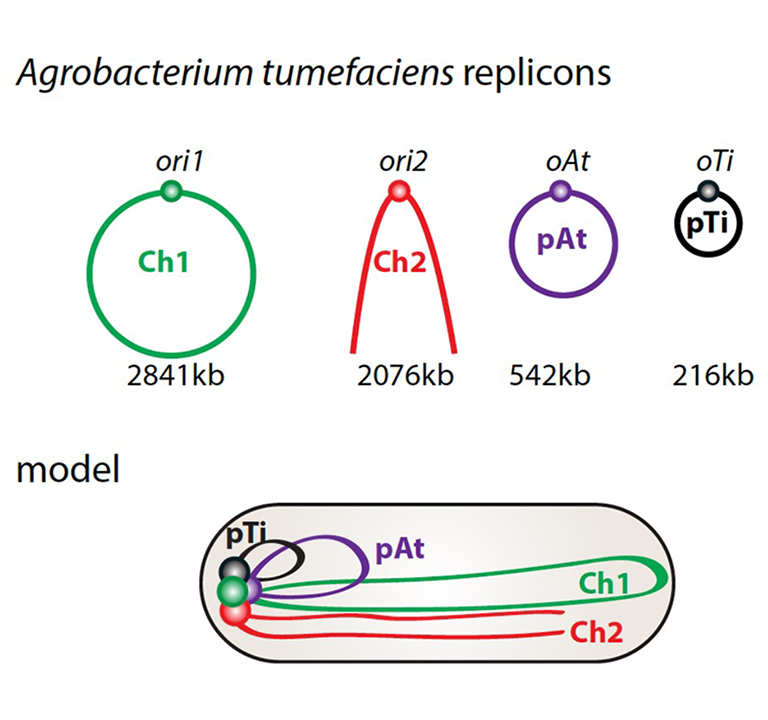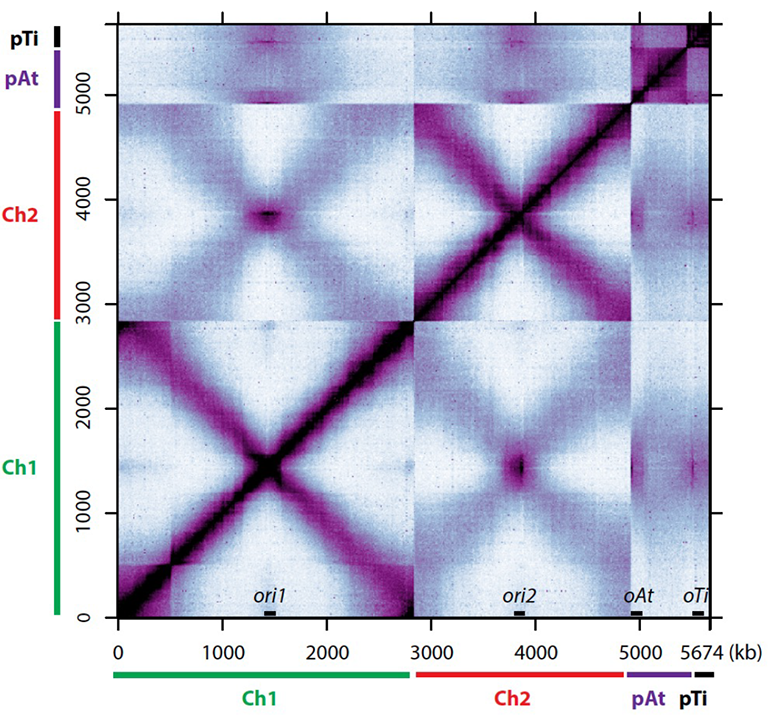About 10 percent of bacterial species have more than one chromosome. These genomes are called multipartite genomes. The species with multipartite genomes are scattered across the phylogenetic tree of bacteria, and the majority of them are plant and animal pathogens or symbionts. Although multipartite genomes enable faster DNA replication and cell division, and allow the bacteria to quickly adapt to different environments, they pose challenges for genome maintenance and segregation. Despite their prevalence, how multipartite genomes are organized and segregated in bacteria is largely unknown.
In a recent paper published in PNAS, researchers in the lab of Xindan Wang (assistant professor in the Indiana University College of Arts and Science’s Department of Biology) identified how the plant pathogen Agrobacterium tumefaciens organizes and segregates its genome. A. tumefaciens has a circular chromosome, a linear chromosome, and two large plasmids.





 The College of Arts
The College of Arts